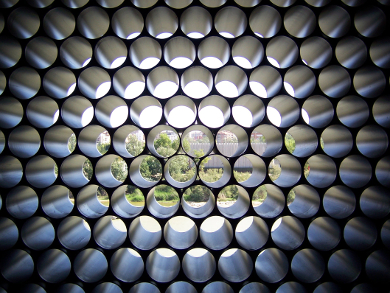Silica nanotubes have useful properties auch as tunable particle size and non-toxicity. They can be functionalized and coverted into more complex silicate nanotubes, which can incorporate metals. The resulting hybrid materials can be magnetic and thus easily separated from solution and recycled. Nanotubes and other nanostructures have been investigated as possible adsorbents for protein separation and purification, wherein the protein binds to the metal.
Min Zhang, Wenjun Gan, Jingli Xu, and colleagues, Shanghai University of Engineering Science, China, have synthesized magnetic nanotubes with a copper-silicate shell and superparamagnetic iron oxide core. The researchers started from silver nanowire templates, which they coated with Fe3O4 and a silica layer. The team then used a one-pot method to transform these templates into copper silicate/iron oxide nanotubes via a hydrothermal process that removes the template and leads to hollow structures.
The tubes have a high specific surface area and perform well for the adsorption of the proteins hemoglobin and myoglobin from solution. The nanocomposites were separated from the solution using a magnet. After the separation, the proteins could be desorbed and recovered from the nanotubes. These results show the potential of magnetic nanotubes for separation of proteins from biological samples.
- Facile Synthesis of Magnetic Hierarchical Copper Silicate Hollow Nanotubes for Efficient Adsorption and Removal of Hemoglobin,
Min Zhang, Baoyu Wang, Yanwei Zhang, Weizhen Li, Wenjun Gan, Jingli Xu,
Dalton Trans. 2015.
DOI: 10.1039/C5DT04248H



